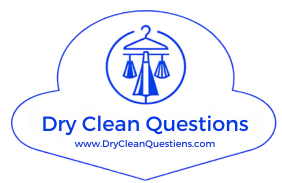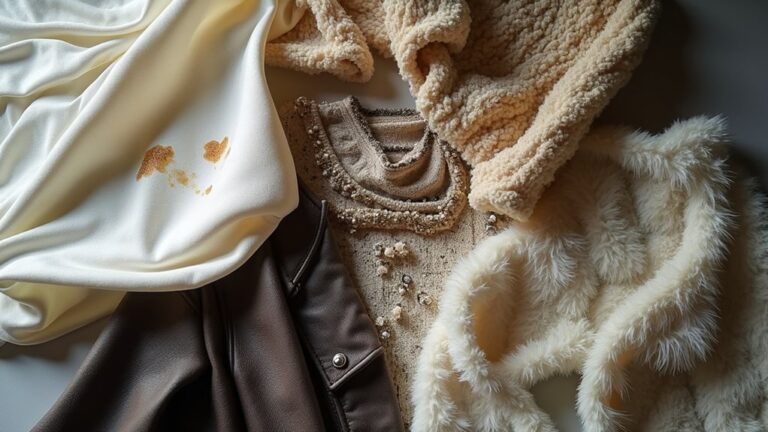You shouldn’t dry clean delicate natural fibers like cashmere, silk, and fine wool, as harsh solvents can irreversibly damage them—hand washing works better. Synthetic materials including nylon, spandex blends, and PVC break down completely under dry cleaning chemicals, while embellished garments with beads or sequins often lose decorations when adhesives weaken. Down-filled items lose their insulating properties permanently, and everyday cotton or linen pieces simply don’t need professional treatment. There’s much more to discover about proper garment care.
Delicate Natural Fibers That Prefer Hand Washing
Many delicate natural fibers are like that friend who seems high-maintenance but actually just needs a gentler touch—they’ll reward your careful attention with years of beautiful wear.
When you’re dealing with cashmere, silk, or fine wool, skip the dry cleaning and accept hand washing instead. Your cashmere sweater needs a gentle detergent bath every 7-10 wears to stay soft and moth-free, while silk garments prefer tepid water to preserve their gorgeous sheen.
Fine wool’s trickier—modern pieces are often machine-washable on gentle cycles, but vintage items need special care instructions. Hand washing gives you complete control over these delicate fabrics, preventing the shrinkage and distortion that harsh dry cleaning solvents can cause. The chemical solvents used in dry cleaning, particularly perchloroethylene, can break down these natural fiber structures and cause irreversible damage to their texture and appearance.
Synthetic Materials That Can Be Damaged by Dry Cleaning Chemicals

While natural fibers might surprise you with their preference for gentle care, synthetic materials present an entirely different challenge that can catch even experienced clothing enthusiasts off guard.
You’d think these man-made fabrics would be tougher, right? Unfortunately, harsh chemicals used in dry cleaning can wreak absolute havoc on your favorite synthetic pieces, causing them to lose their shape, elasticity, and protective coatings that keep them looking fresh.
Here’s what you should keep away from those cleaning agents:
- Nylon and spandex blends – they’ll lose their stretch permanently
- Polyester blends with intricate embellishments – details may deteriorate
- PVC and polyurethane materials – these break down completely
- Acrylic sweaters – they become misshapen disasters
- Cotton-polyester mixes – especially delicate designs
Always check your care label first, and when in doubt, opt for a gentle delicate cycle at home instead. Beyond fabric damage concerns, traditional dry cleaning solvents like perchloroethylene can pose health risks including respiratory irritation and neurological effects with prolonged exposure.
Embellished and Decorated Garments at Risk
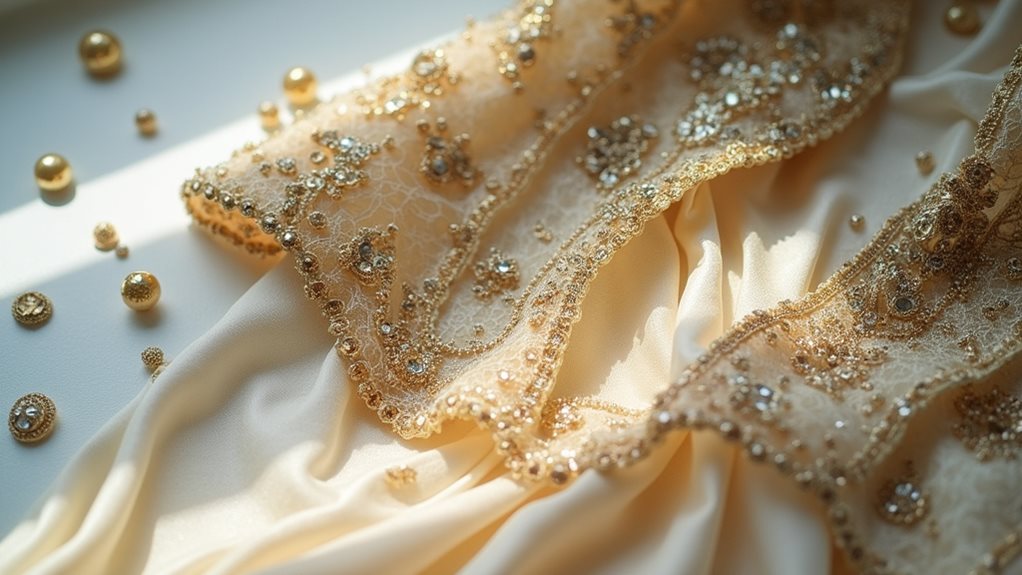
Although your stunning beaded evening gown or that gorgeous sequined top might seem like perfect candidates for professional cleaning, these embellished beauties can actually become casualties of the dry cleaning process, and I learned this the hard way when my favorite vintage cocktail dress came back looking like it had been through a glitter tornado.
The harsh solvents used in dry cleaning can create weakened adhesive bonds, causing your delicate decorations to literally fall off like confetti 🎊. Fabrics like velvet and chiffon, commonly found in embellished garments, are particularly sensitive to water and chemical treatments, while dark silks can suffer from dye bleeding that ruins their elegant appearance.
Vintage clothing is especially vulnerable to dry cleaning damage due to the fragile nature of older fibers and aging decorative elements.
Instead, preserve color and maintain structure by hand-washing these complex designs gently at home.
Down-Filled Items That Lose Their Properties
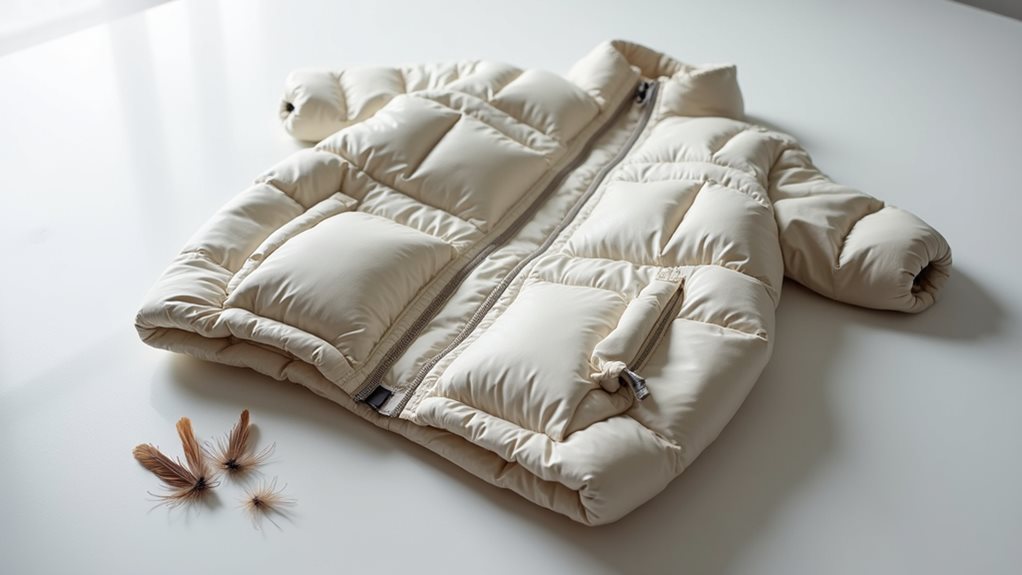
The harsh dry cleaning chemicals strip away the natural oils that keep down feathers fluffy and resilient, causing irreversible damage to their insulation properties.
Dry cleaning chemicals permanently destroy the natural oils that give down feathers their insulating power and fluffy texture.
Here’s what you should know about protecting your down-filled items:
- Use a front-loading washer on cold, gentle cycle instead of dry cleaning
- Rinse twice to remove all detergent residue completely
- Air dry thoroughly to restore full loft
- Check manufacturer guidelines before cleaning
- Remember that dry cleaning often voids warranties on down products
Your cozy comfort depends on proper washing techniques.
Everyday Cotton and Linen Pieces
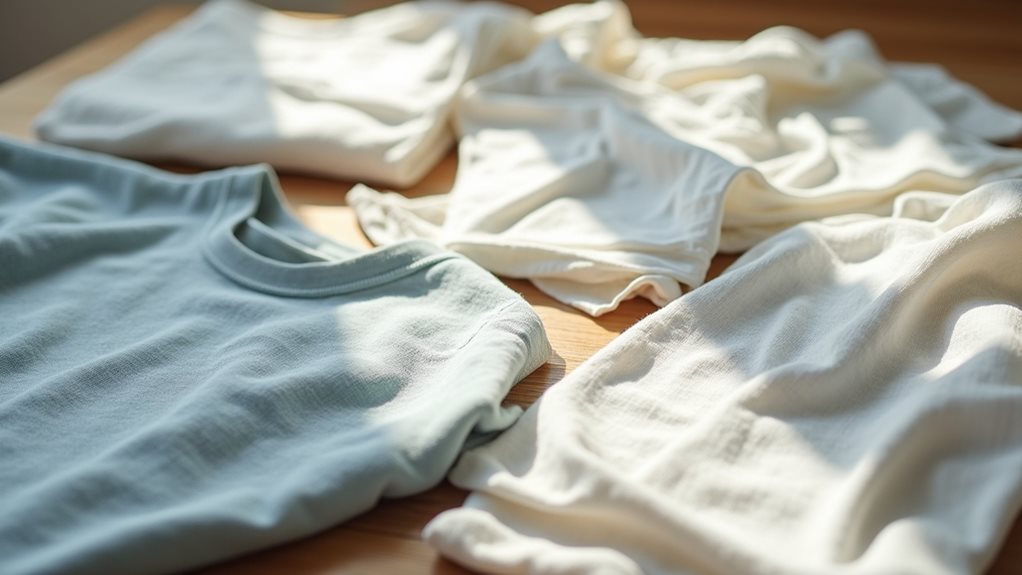
Since cotton and linen pieces make up the backbone of most people’s wardrobes, it’s honestly puzzling why anyone would send their everyday t-shirts, jeans, or casual button-downs to the dry cleaner when these hardy fabrics practically beg to be tossed in your washing machine at home.
Trust me, I’ve learned this lesson after wasting countless dollars on unnecessary dry cleaning! These durable fabrics thrive with traditional washing methods using warm water and regular detergent, delivering spotless results without the hefty price tag.
Simply hang to dry or lay flat to prevent shrinkage, and you’ll maintain their shape beautifully. Always check care labels first, but home laundering beats dry cleaning for everyday cotton and linen pieces every single time. Many items labeled “dry clean only” can actually be hand-washed or machine-washed on gentle cycles using cold water and mild detergent, making professional cleaning unnecessary for most everyday garments.
